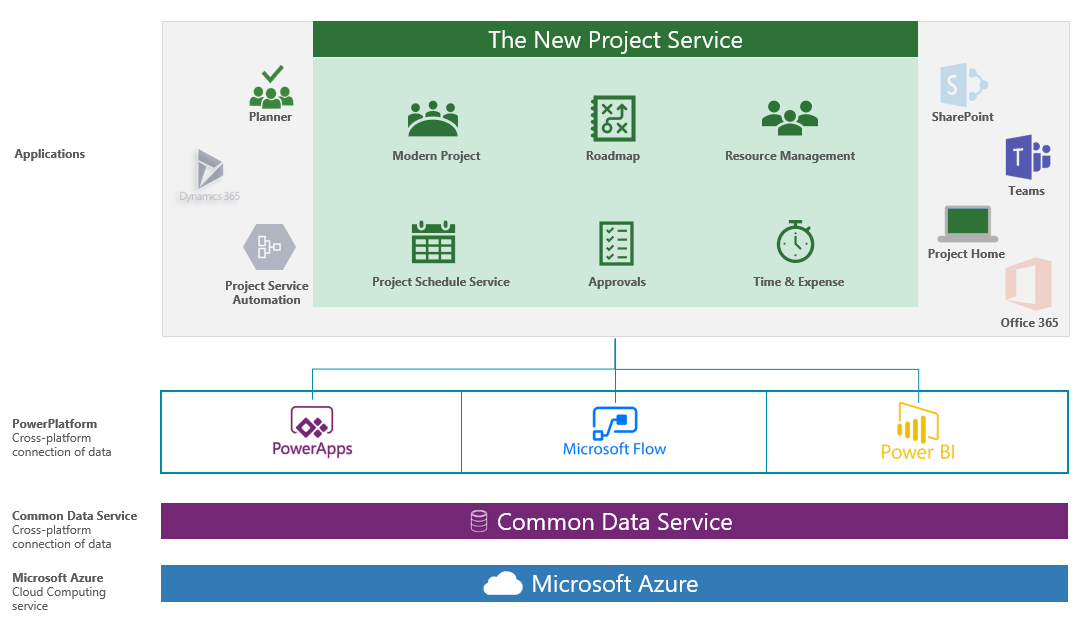During the Ignite in September 2018, Microsoft announced several new features for the Mi-crosoft Project universe. One of them is a brand-new Microsoft Project Service, which does not only have a redesigned user interface and enhanced functionality, but also a completely new technological infrastructure. Like Dynamics 365 and its Project Service Automation (PSA) feature, the new Microsoft Project service will rely on the Microsoft Power Platform and the Common Data Service for Apps (CDS).
The new Project Service
The new Microsoft Project service supports the Modern work management approach of Office 365 as it will rely on the O365 Modern group infrastructure. Thus, it provides the basic collaboration infrastructure and allows to integrate with Teams in a seamless manner. It will integrate with existing features like Project Home, which allows users to manage and view all their projects across different sites & tools at a glance, and the Roadmap feature to get a big picture of the most relevant facts from several projects. Furthermore, the new Project Service will offer a new and easy to use, web-based project management experience with additional modules like Resource Management or Time & Expenses.
Microsoft Power Platform
The Power Platform contains PowerApps, Power BI and Flow and is built on CDS.
- With PowerApps applications for mobile devices can be built in a short time using Excel-like expressions to implement logic.
- In Power BI interactive real-time dashboards can be created, which allows you to evaluate data and discover insights, which will help your business to move forward.
- No-code/Low-code Flows can be integrated into your applications and can be connected with hundreds of apps and services.
- CDS is a standard and extensible collection of schemas (entities, attributes, relationships) that represents business concepts and activities with well-defined semantics, to facilitate data interoperability. Examples of entities include: Project, Project task, etc.
Through the Power Platform the users therefore benefit from the ease and possibilities of customizing and development of the various services. This raises the opportunity to implement innovative and exciting project management use cases.
The Benefits are:
- One architecture including many services and applications
- Easy access to applications and data sources
- Editing and customizing of applications on one platform
- Low administration effort
- Connecting and sharing data between different applications


